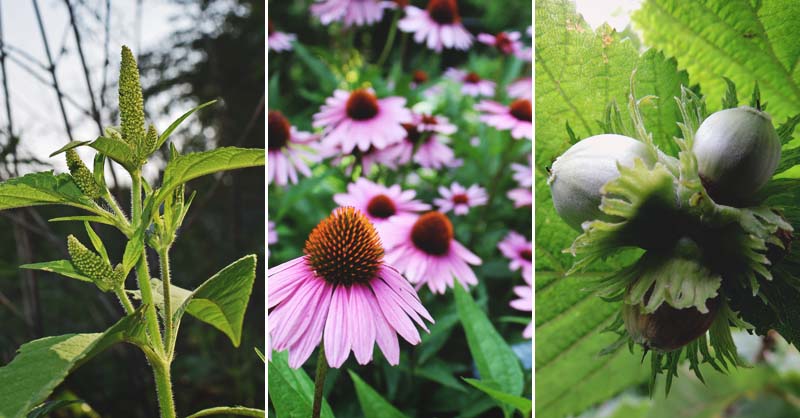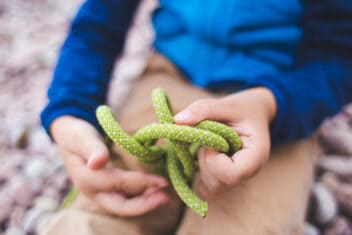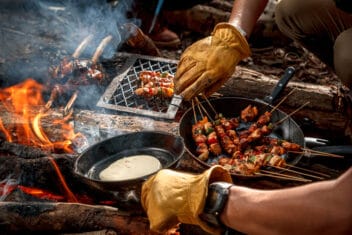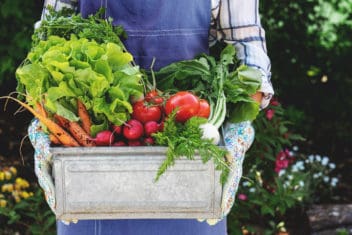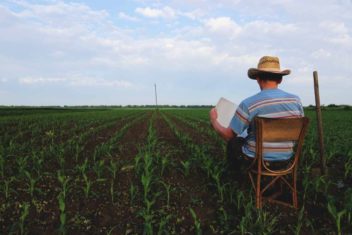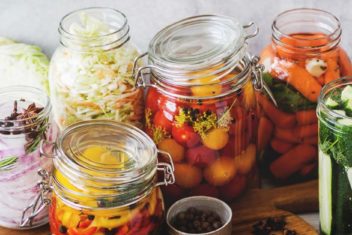Edible wild plants are all around us, growing anywhere from the cracks of a city sidewalk to the hillsides of a mountain forest. There’s a garden of free food out there waiting to be harvested if you know what to look for.
Having knowledge of which plants are edible in your area lets you forage for extra food, which is nice when you are on a tight budget. You also get the benefit of trying new flavors, some of which are difficult – if not impossible – to find at the grocery store.
It’s not only about stocking your fridge, though. If you’re in a survival situation, knowing what you can and can’t eat can save your life.
On top of all that, being able to pick wild food is a fun activity. You learn a lot about nature, and it’s amazing how aware of the natural world you become.
Below are some plants you’ll find growing wild throughout North America – some common, and some not so common.
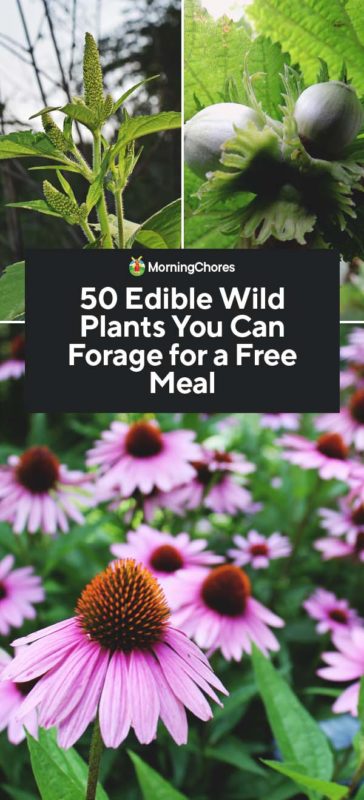
Edible Wild Plants
1. Burdock (Arctium lappa)

This plant is easy to spot if you look for the annoying burrs. When those aren’t present, look for a rosette of oblong, pointed leaves with no stem that grow close to the ground in the first year.
Edible parts: The leaves are edible, but older leaves are tough and taste better when cooked. Young roots and the interior of the flower stalks are also edible.
Flavor: Earthy and somewhat sweet.
Caution: Cocklebur looks a lot like Burdock, but its leaves must be cooked to eliminate toxic components.
2. Wood lily (Lilium philadelphicum)
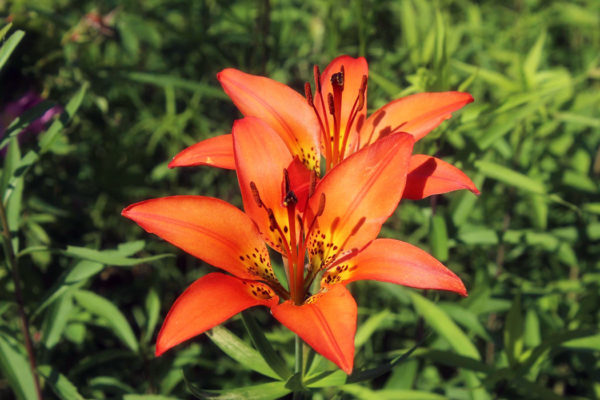
Look for cup-shaped, purple-spotted orange flowers on a 1 to 3-foot stalk. The stem has long, narrow leaves in whorls. This plant is becoming less common.
Edible parts: You can eat the flowers and seeds of this edible wild plant.
Flavor: This plant has a slightly peppery taste.
Caution: Not all lily varieties are edible.
3. Bamboo (Bambusoideae)

There are hundreds of bamboo species, and 110 of them are edible. Use a guide to determine which types grow near you.
Edible parts: The shoots are the edible portion of the plant.
Flavor: The taste varies by variety from savory to sweet, and they’re a good way to add a crunchy texture to a dish.
Caution: Make sure you know which bamboo type you are eating. Some contain a toxic amount of cyanogenic glycosides. Shoots should be boiled before consuming.
4. Blueberries (Cyanococcus)
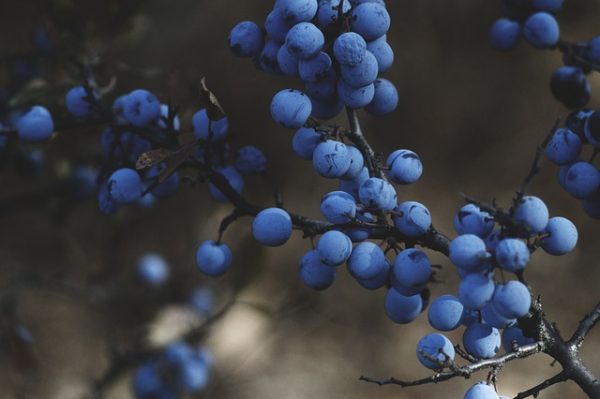
Blueberries grow multiple thornless canes directly out of the soil in sunny areas close to water. They only grow wild in the northern and eastern areas of the U.S.
Edible parts: The freshly picked berries are delicious on their own or added to desserts.
Flavor: Sweet and slightly sour.
Caution: Plenty of poisonous berries look like blueberries, so make sure you are identifying the plant correctly.
5. Prickly Pear Cactus (Opuntia)

Look for a many-branched cactus with broad, flat pads. They bloom from April to June and can be found wild from Canada to Argentina.
Edible parts: You can eat the flesh of this edible wild plant, but you have to get past the spikes first. You can also eat the fruit.
Flavor: Varies but may have a slightly sour taste.
Caution: Other cacti may not be edible. Be careful to remove the spines and prickly parts before consuming the flesh.
6. Red Clover (Trifolium pratense)
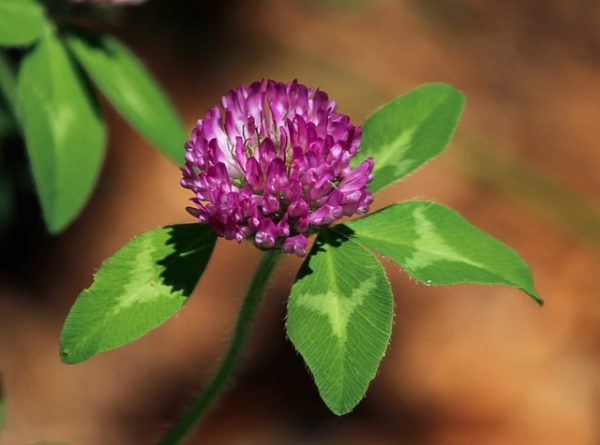
Clover is in the pea family, and it has a bit of a pea-like taste. Look for pale green leaves with a distinct chevron pattern.
Edible parts: Anything and everything, but you should cook older leaves.
Flavor: The blossoms have a fresh, grassy taste. The rest is nutritious but not as tasty.
Caution: Red clover variety is edible but contains high amounts of alkaloids in the fall. Not everyone tolerates clover as an edible. Pregnant women shouldn’t eat it.
7. Kelp (Laminariales spp.)
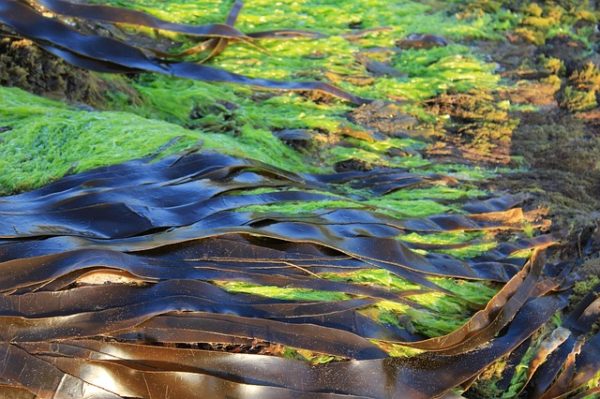
Also known as seaweed or sea vegetables, kelp has a ton of fiber, is low in calories and is dense in nutrients. All seaweed is edible, but some taste much better than others.
Edible parts: You can eat the entire kelp plant.
Flavor: Tastes like the ocean or sea, which is unsurprising given that’s where it comes from.
Caution: Blue-green algae found in freshwater is poisonous. Also, be aware that kelp can contain lead and copper concentrate when it grows in industrial areas. Don’t eat kelp washed up on shore because it can be rotting.
8. Coneflower (Echinacea purpurea)
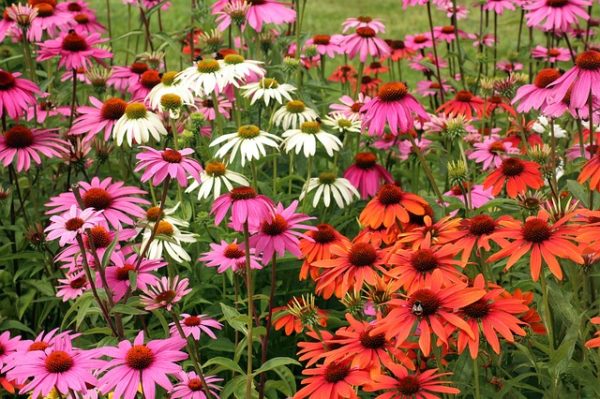
This North American native has been eaten and used as medicine for hundreds of years. Look for the daisy-like flower that features petals popping out of a prickly center cone.
Edible parts: You can eat the leaves and petals of this edible wild plant.
Flavor: This has a perfumed, floral taste and aroma.
Caution: Some flower varieties resemble yellow coneflowers which are not edible.
9. Curly Dock (Rumex Crispus)
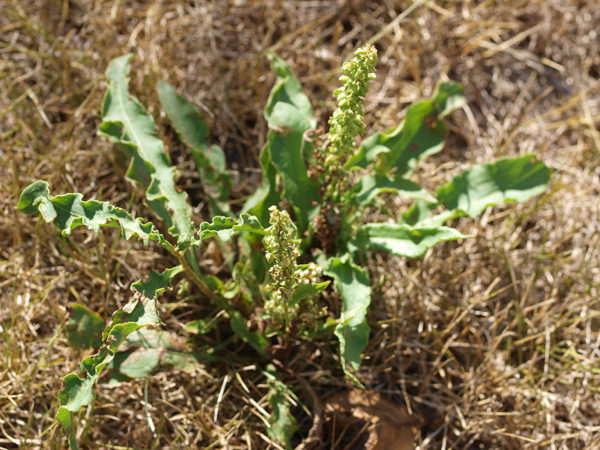
People consider this a weed, and you’ll find it in neglected areas like parking strips, roadsides, and overgrown lawns. Look for long, pointed leaves with a wavy edge growing out of a central taproot.
Edible parts: You can eat the leaves, but note that the young ones taste best.
Flavor: This has a sour kick thanks to the oxalic acid content. It has a slightly spinach-like taste.
Caution: Don’t overeat this green plant as it contains oxalic acid. Make sure you aren’t eating a plant that has been poisoned.
10. Dandelion (Taraxacum)
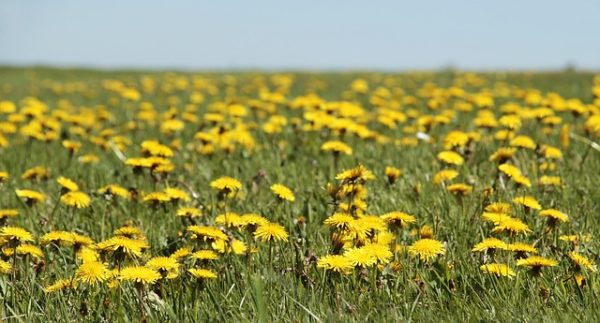
Dandelions are an underappreciated plant that far too many people are eager to eliminate. They are nutritious, easy to find and taste wonderful.
Edible parts: The whole plant is edible and contains many macronutrients, including plenty of calcium.
Flavor: Younger plants grown in shaded areas have a milder flavor and are not as bitter as mature plants grown in full sun.
Caution: Because people consider this a weed, make sure you are foraging from an area that hasn’t been treated with pesticides.
Our video below explains more about foraging dandelions in the spring.
11. Lobster mushroom (Hypomyces lactifluorum)

The lobster mushroom is an orange-red capped mushroom covered in bumps. Inside, it’s white, and it often twists itself into odd shapes as it matures. They prefer old-growth forests.
Edible parts: Whole mushroom.
Flavor: The taste reminds some people of a poached lobster. It has a slightly sweet flavor with nutty notes.
Caution: Mushroom identification is not for beginners! Many mushrooms have poisonous doppelgängers. Wild mushroom foraging requires careful identification, and you shouldn’t dig in until a professional has given you the go-ahead.
12. Hazelnut (Corylus americana, Corylus cornuta)
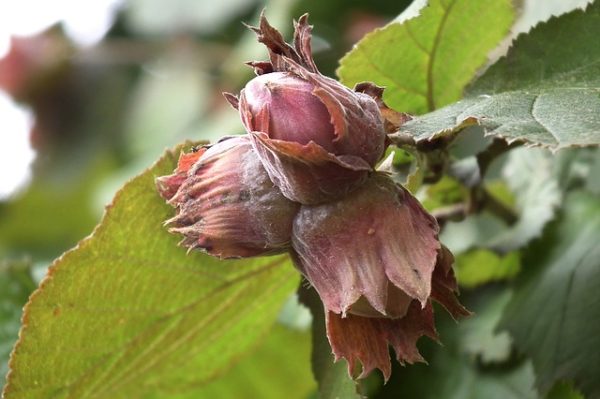
There are two types of hazelnuts native to North America, and some European types have naturalized in the U.S. Nuts are ready in early August and into the fall. Look for multi-stemmed shrubs that grow about 10-feet tall (though they can get up to 25-feet with the right conditions) with husk-covered brown nuts.
Edible parts: Nuts from this tree are edible.
Flavor: Tastes like – surprise – hazelnut.
Caution: Some states limit or prohibit foraging tree nuts, so be sure to check your local laws.
13. Wild rose (Rosa spp.)
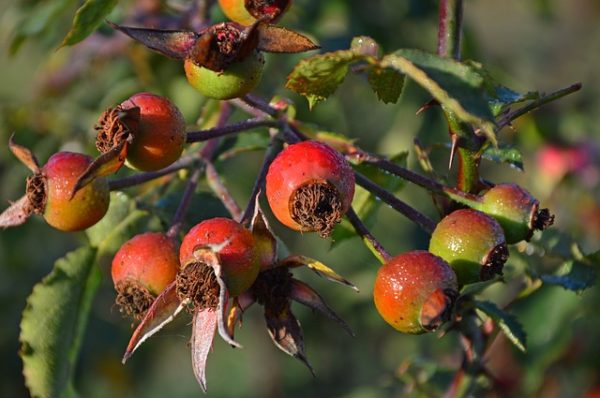
Wild roses have pink flowers with five petals. When the fruits form, they are round or pear-shaped, and orange or red in color. They grow everywhere from wooded areas to roadsides.
Edible parts: Petals, rosebuds and young shoots and leaves.
Flavor: Fragrant, perfume-like aroma.
Caution: Rasberry and blackberry plants look like wild roses. That’s because they are all in the rose family.
14. Yaupon holly (Ilex vomitoria)
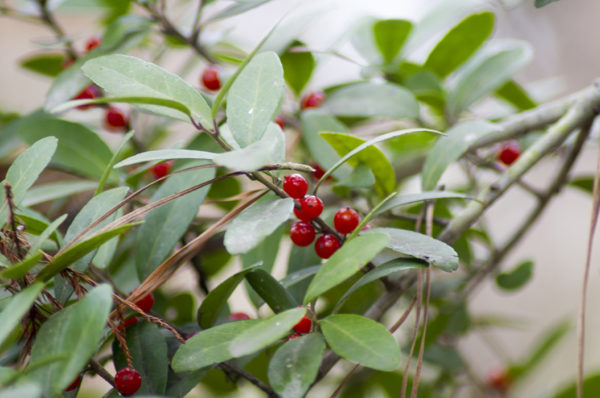
Yaupon is the only native tea plant in North America and, until recently, many landowners were trying to eradicate it as an invasive species (which it isn’t). A cup of tea from this plant contains as much caffeine as your average cup of coffee.
Edible parts: Dry or boil the leaves to make tea.
Flavor: Depends on how it is prepared, but it has a similar flavor to yerba mate tea.
Caution: Don’t eat the berries because they can make you vomit.
15. Cloudberry (Rubus chamaemorus)
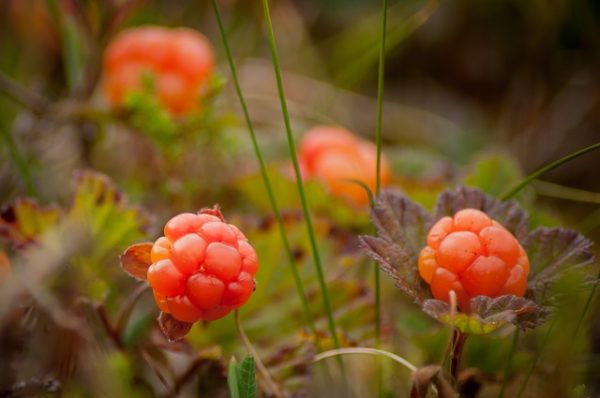
If you are lucky enough to live in an area where cloudberry grows, then you must give it a try. There’s nothing like a fresh cloudberry. Look for a low-growing plant with three leaves per plant in northern boreal regions. The flowers are small and white, and each plant grows one light red berry.
Edible parts: Fruit and flowers of this plant are edible. If you can find it, I highly recommend cloudberry jelly. It’s amazing.
Flavor: Tastes like a raspberry, but a little sourer.
Caution: Many berries look alike. Carefully identify the plant before consuming its berries.
16. Sweet gale (Myrica gale)
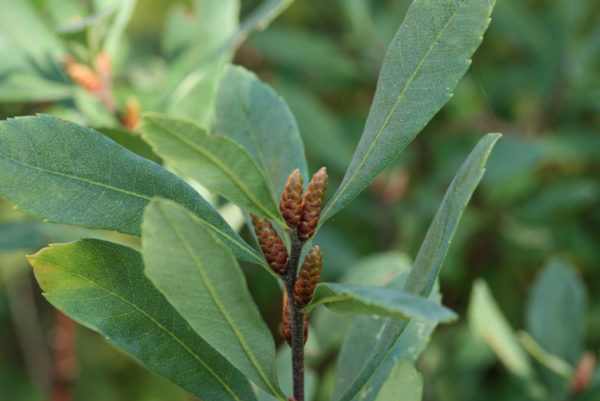
Also known as the bog myrtle, this plant has several medicinal benefits, including as a treatment for acne, stomach ache, and liver issues. You can also keep the leaves around as a potent insect repellent. This plant grows as a shrub near bogs, with flat, oblong leaves.
Edible parts: Its fruit and leaves are edible and make a tasty tea.
Flavor: Slightly bitter taste.
Caution: Pregnant women shouldn’t eat this plant.
17. Fireweed (Chamerion angustifolium, Chamerion canescens)

This pretty plant is part of the evening primrose family. Look for the tall, purple blossoms growing from long, pointed, alternate leaves.
Edible parts: Flowers are edible raw or cooked. Leaves from young plants can be eaten, as well.
Flavor: Depends where it’s growing, but often has a sweet and slightly citrus flavor.
Caution: Watch your quantities when eating fireweed. Too much can have a laxative effect.
18. Garlic Mustard (Alliaria petiolata)
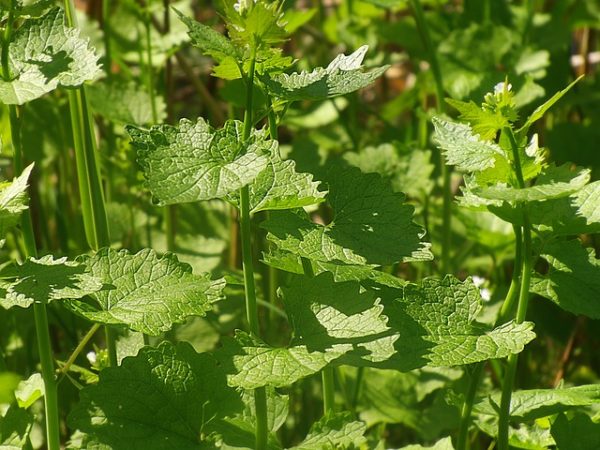
People consider this plant a weed so you can do your part to help keep it in check in the wild by eating it, which is fortunate because it’s delicious. It has scalloped leaves in a basal rosette, but the surest way to tell that you’ve found the right plant is to crush the leaves. It will smell like garlic.
Edible parts: The entire plant is edible.
Flavor: Garlicky taste. Strong aroma of garlic, too.
Caution: Multiple doppelgängers exist including ground ivy, black mustard, and fringecup. You’ll know it’s garlic mustard if it smells pungent and a lot like garlic.
19. Fiddleheads (Matteuccia struthiopteris)
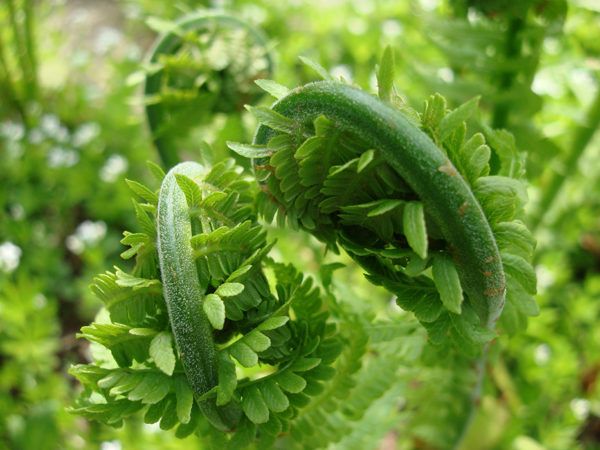
Fiddleheads are ferns before they have fully opened. You’ll find them emerging from the ground in spring from wet, fertile soil.
Edible parts: Furled-up fern portion of the plant.
Flavor: This edible wild plant has a mild asparagus flavor mixed with a bit of spinach, as well.
Caution: Remember that ostrich fern fiddleheads are the edible kind. Some ferns are poisonous, so identification is crucial.
20. Wood Sorrel (Oxalis)
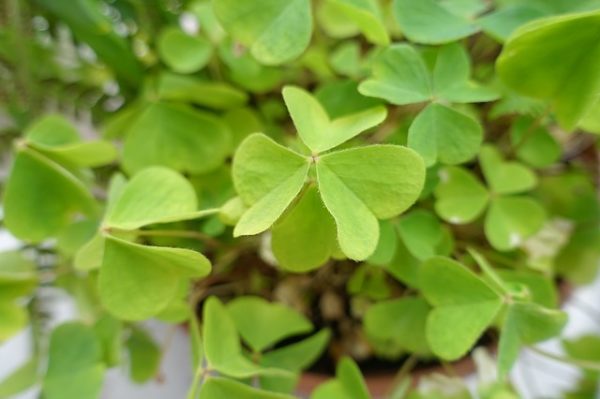
Wood sorrel gets confused with clover, and it’s even known as American shamrock, even though it isn’t a shamrock at all. Look for three joined heart-shaped leaves. Each “heart” will have a crease down the middle. When it is blooming, you can spot it by the pink, white and lavender flowers.
Edible parts: Leaves and flowers are edible raw, but the flavor is milder when cooked, and toxic compounds are removed via the cooking process.
Flavor: Sour flavor thanks to its oxalic acid content.
Caution: Watch out, this edible wild plant, like other sorrel varieties, contains oxalic acid. This component gives it its acidic taste but is also toxic in large quantities. Not safe for pets to consume.
21. Wild Leek (Allium tricoccum)
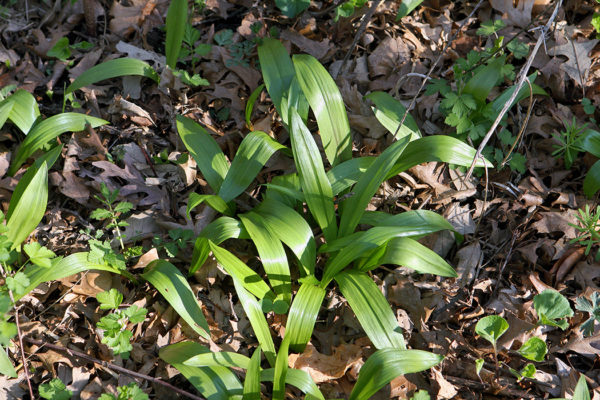
Also known as ramps or ramsons. If you can find these, you’ve hit the wild edible plant jackpot, because they are delicious. In the spring, look for wild leeks in the moist soil, usually under trees. They grow in 2 or 3 broad, smooth leaves out of a white bulb. Don’t harvest the bulb, because ramp populations are dwindling, and it takes five years or more for a ramp plant to mature.
Edible parts: You can eat the bulbs and leaves, but we recommend leaving the bulb in the ground to produce a new plant.
Flavor: No surprise, tastes like leek!
Caution: Lily of the Valley is a poisonous lookalike, so watch out. They only grow in the eastern and mid-western U.S.
22. Chickweed (Stellaria media)
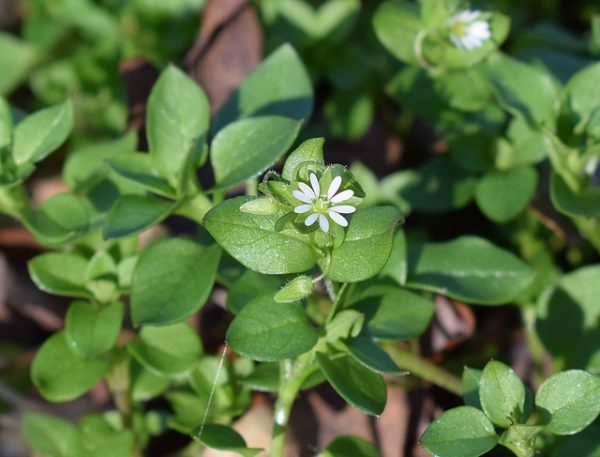
You’ll find this European-native growing wild in lawns and cool, shady areas where the soil is moist.
Edible parts: You can eat the leaves of this plant raw, but they taste better if cooked.
Flavor: Spinach-like flavor.
Caution: Don’t eat too much of this plant at one time.
23. Broadleaf Plantain (Plantago major)
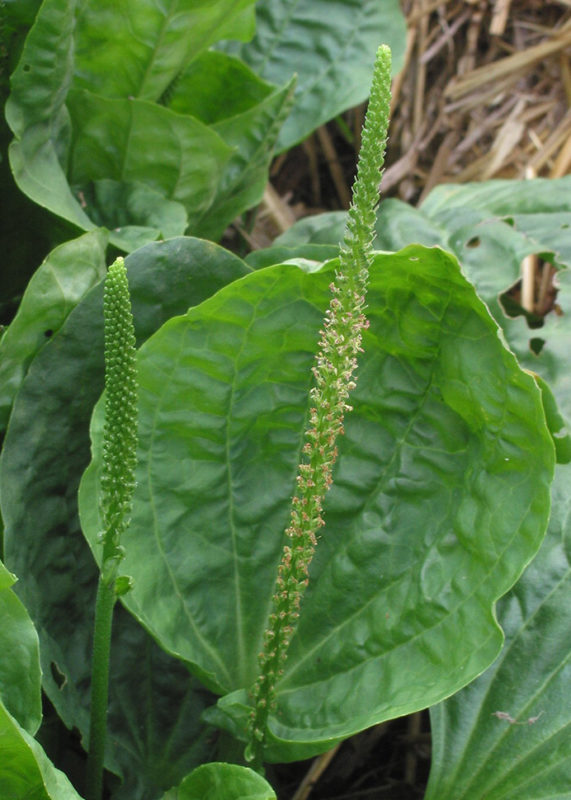
This plant is packed with nutrients, and you can also use it medicinally to treat diarrhea and digestive issues. Look for oval or egg-shaped leaves growing in a rosette. When you break the stems, you’ll find strings that look like celery.
Edible parts: Leaves are edible.
Flavor: Earthy taste with a slightly spicy peppery taste.
Caution: You can mistake young lily plants for broadleaf plantain.
24. Lamb’s Quarters (Chenopodium album)

This common “weed” grows pretty much everywhere humans live. Look for diamond-shaped leaves coated with a flour-like powder on the underside.
Edible parts: All parts are edible.
Flavor: This edible wild plant has a salty taste.
Caution: Be careful not to overeat this plant. It shouldn’t be consumed as a daily staple since the compounds in lamb’s quarter can hinder the absorption of certain nutrients.
25. Coltsfoot (Tussilago farfara)

While the blossom looks similar to dandelion, coltsfoot’s leaves have a heart-shaped, waxy appearance.
Edible parts: Flowers, stems, and leaves.
Flavor: Fresh tasting, some describe it as having a mild melon flavor.
Caution: Pregnant women should not consume this plant, and there may be small amounts of toxins in the leaves, so don’t overeat.
26. Jerusalem artichoke (Helianthus tuberosus)
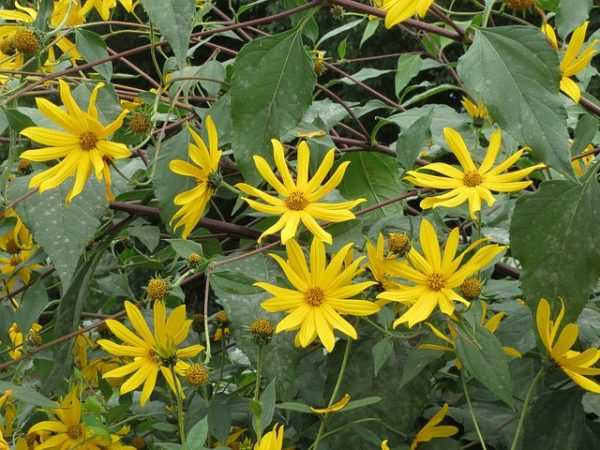
Also known as a sunchoke, this wild plant is in the sunflower family. You can spot it by its bright yellow flower and oval leaves growing in large colonies.
Edible parts: The tuberous root can be eaten raw or cooked.
Flavor: Delicious, nutty flavor.
Caution: You might confuse this plant with a perennial sunflower. Young sunchokes can cause gas.
27. Bluebead (Clintonia borealis)
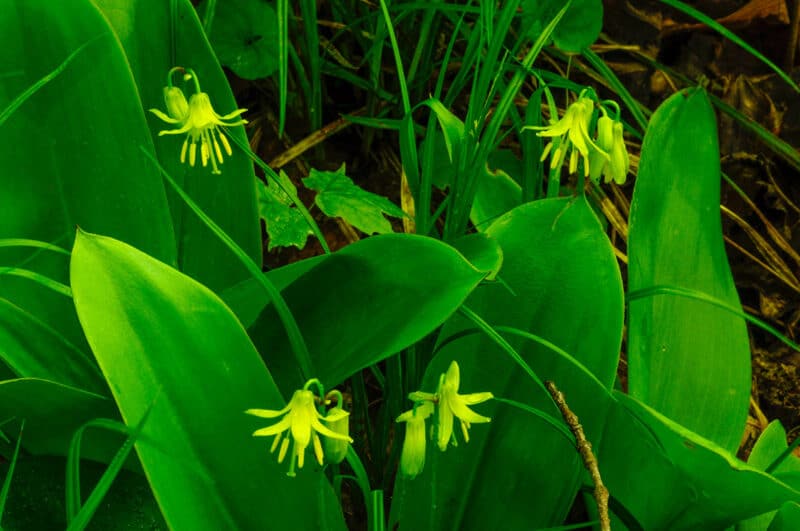
Edible parts: You can eat the leaves of this plant, but the rest of it is poisonous.
Flavor: Taste somewhat like cucumber. The younger the plant is the better the flavor it has.
Caution: This plant is part of the lily family, and many plants in this family are poisonous. The berries, roots, and flowers of this plant are toxic.
28. Mullein (Verbascum thapsus)
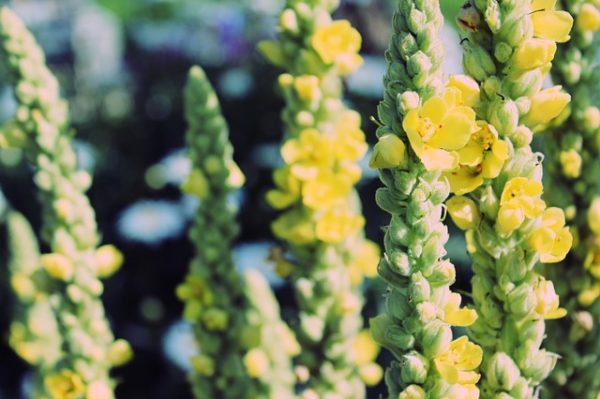
Look for this biennial growing in dry, sunny locations. It’s easy to identify by its tall, erect stem with yellow blossoms, but the large, velvety leaves are easy to spot as well.
Edible parts: You can eat the flowers and leaves.
Flavor: Makes a better tea than eaten raw.
Caution: Some people are allergic to this plant, particularly the little hairs that grow on the leaves.
29. Queen Anne’s Lace (Daucus carota)
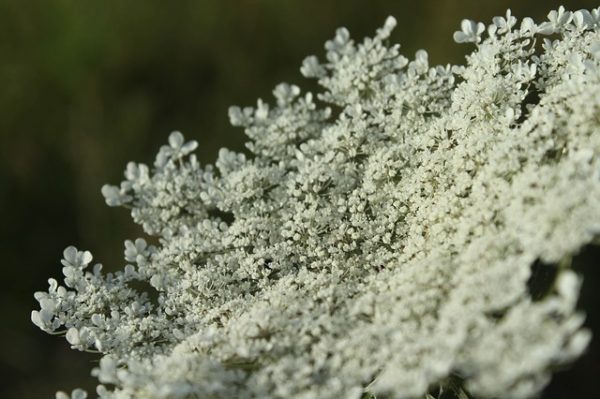
This plant is hardy and grows where others might not. The white flower will sometimes have a single purple spot in the center. The leaves look like a domestic carrot.
Edible parts: Leaves and roots can be eaten.
Flavor: It’s also known as wild carrot, so the foliage has a robust carrot-like scent. The root, however, is described by some as being mildly sweet. Older plants may taste bitter, though.
Caution: Watch out, this plant looks like poison hemlock and giant hogweed.
30. Cattails (Typha latifolia)
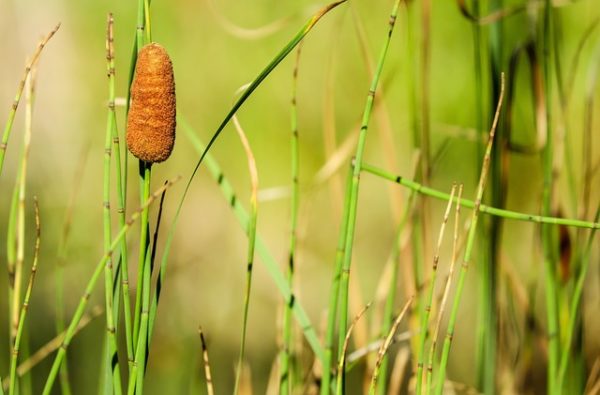
Also known as bulrushes, not only can you eat this plant, but you can use it to make baskets or mats. The head can be dipped in fat and used as a candle. Look for a brown, cigar-like head on a tall stalk.
Edible parts: Inner part of the plant, roots, flower spikes, and pollen can be consumed.
Flavor: Generally sweet, but taste varies depending on growing location and environment.
Caution: Don’t mistake this for the blue flag iris (Iris versicolor). They grow in similar areas.
31. Morels
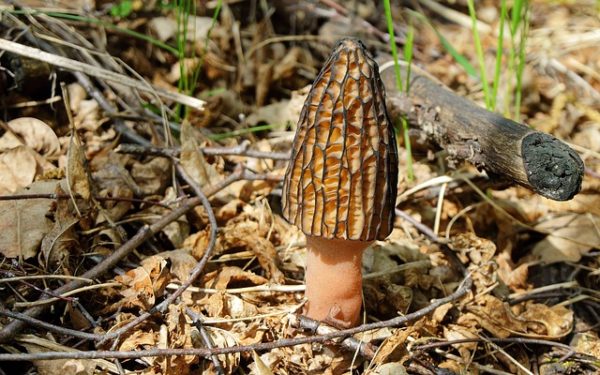
Morels aren’t farmed, you can only find them in the wild, and they are worth the work. They are oblong or bulbous, and they can vary between light brown to dark gray. Make sure to verify that you have identified the right mushroom by talking to an expert before consuming.
Edible parts: Entire morel.
Flavor: Morels have a delicious nutty taste.
Caution: False morels are toxic and cause serious illness if consumed. In some cases, ingestion may be fatal, so talk to an expert before eating.
32. Self-heal (Prunella vulgaris)
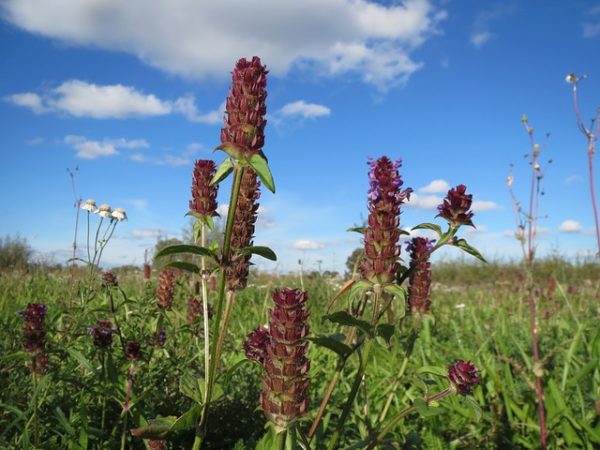
Self-heal is the bane of lawn owners, but an excellent plant for foragers. It grows in clusters with ovate leaves and small, purple, tubular flowers.
Edible parts: Leaves.
Flavor: Somewhat bitter tasting.
Caution: Make sure not to mistake this for ground ivy.
33. Amaranth (Amaranthus retroflexus)
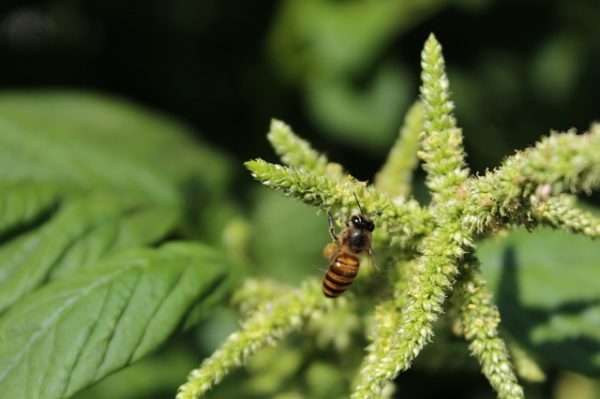
You might have heard this plant called pigweed and you’ll often find it growing wild in fields or abandoned gardens. The stem is the easiest way to identify this plant. It is erect, and the upper part is covered in dense, short hairs that have a reddish tint.
Edible parts: Both wild and domesticated versions of this plant are edible. You can eat the whole plant, though some parts are best cooked before being eaten.
Flavor: Amaranth has a delicious, nutty flavor.
Caution: Be sure to pick from areas that haven’t been poisoned.
34. Pickleweed (Salicornia europeae)
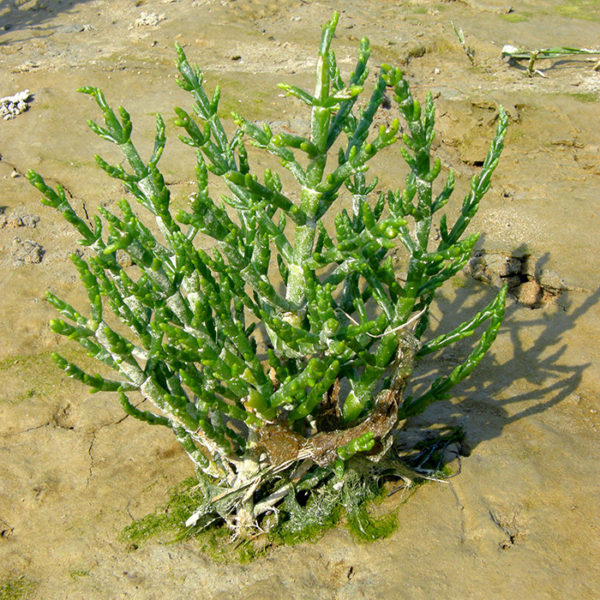
This salt-loving plant is sought after by chefs for its savory taste. It grows primarily near the coasts, but also inland near saline water. It has opposite shooting branches and a succulent-like leaf.
Edible parts: Top parts of the stems can be consumed raw or cooked.
Flavor: This edible wild plant has a mild salty taste.
Caution: This plant is an integral part of the saltmarsh environment, so be sure that you are sourcing from an area that hasn’t been over-harvested.
35. Yarrow (Achillea millefolium)
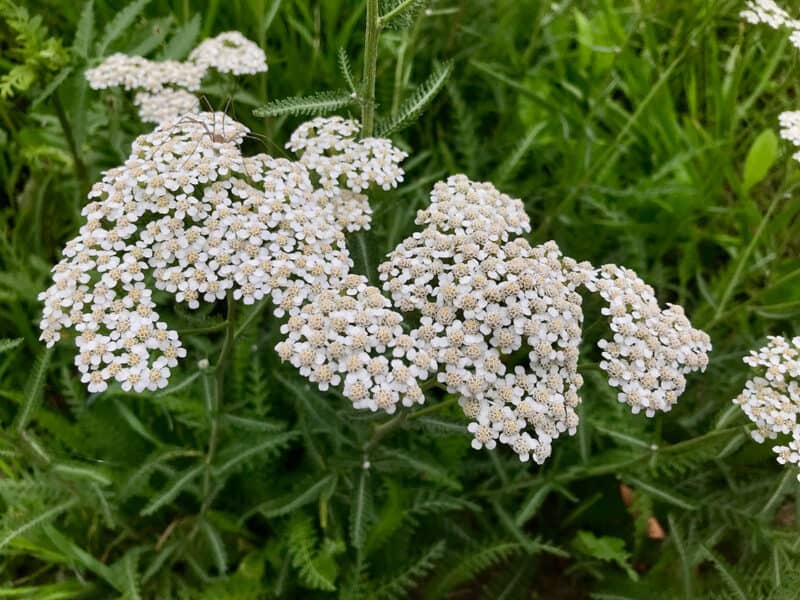
Yarrow has feathery, lance-shaped leaves that are smaller as they grow up the stem. Flowers bloom from spring to autumn and feature round-topped clusters of tiny, white blossoms. It’s an adaptable plant that grows in a variety of places.
Edible parts: The leaves of this plant are edible.
Flavor: This has a slightly bitter flavor.
Caution: Poison hemlock and water hemlock look a lot like yarrow, so be sure to identify the plant correctly.
36. Catnip (Nepeta cataria)

Catnip grows almost anywhere. Look for the fuzzy, arrow-shaped leaf with rounded teeth on the edges. It smells slightly minty (it’s a member of the mint family).
Edible parts: Eat the leaves and young flowers.
Flavor: Tastes reminiscent of mint.
Caution: Catnip can look like wood nettle, but it lacks the fuzzy, soft look. Wood nettle will also give you a bite if you touch it.
37. Chanterelles (Cantharellus cibarius)
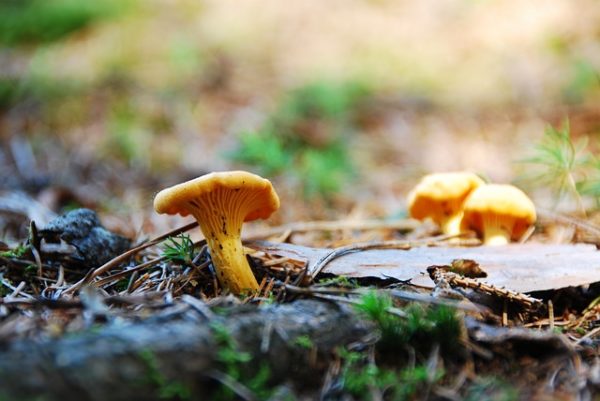
Finding the golden, wavy chanterelle mushroom is like finding a pot of forest gold. They are delicious.
Edible parts: You can eat the whole mushroom.
Flavor: They are prized for their strong, savory flavor that has a hint of woodsy pepper.
Caution: Proper identification is vital. Many mushrooms look the same, but some are extremely poisonous. Chanterelle lookalikes include Jack o’ lanterns and false chanterelles. Always consult a professional until you are certain of what you are foraging.
38. Elderberry (Sambucus canadensis)
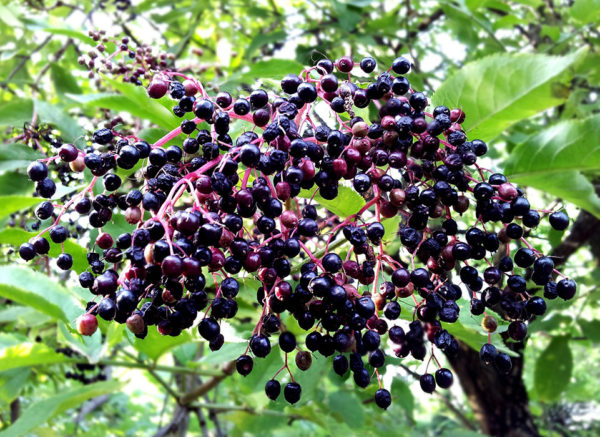
A member of the honeysuckle family, elderberry is grown as an ornamental in some areas. It’s native to North America east of the Rocky Mountains. Look for compound leaves on a medium-sized shrub. When fruiting, look for black berries in umbrella-shaped clusters.
Edible parts: The flowers and fruits are edible.
Flavor: Depending on where they are growing and how ripe they are, they can be tart, sweet or tangy.
Caution: Don’t mistake this for water hemlock.
39. Stinging Nettle (Urtica dioica)
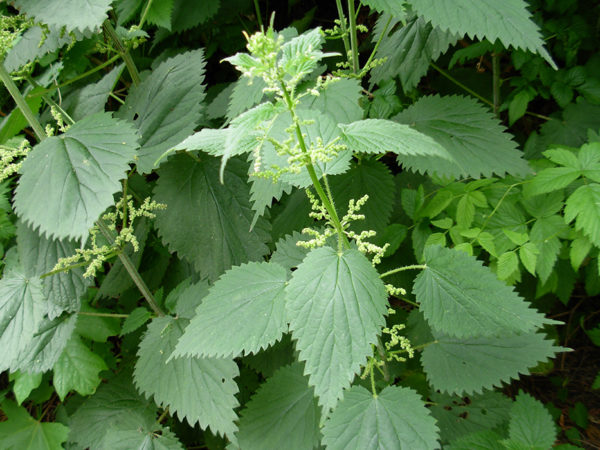
It’s too bad that stinging nettles have such a negative reputation because they are nutritious and tasty. Look for the distinctive arrow-shaped leaves with teeth on the edges. You also know you’ve found it when you feel the bite.
Edible parts: You can eat the leaves, stems, and roots.
Flavor: This edible wild plant tastes a lot like spinach.
Caution: Wear gloves and long sleeves when picking this plant. Best when they are young. You must cook them to get rid of the sting.
40. Watercress (Nasturtium officinale)
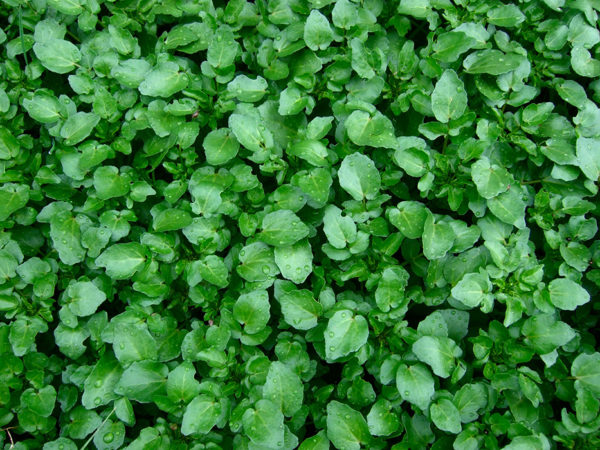
As the name implies, watercress grows in dense mats in shallow running water. It is full of vitamins and minerals.
Edible parts: The leaves, stems, and flowers are edible.
Flavor: Mild to bold peppery, horseradish flavor.
Caution: Be sure you are picking from safe water sources and always wash before eating.
41. Wild Onion (Allium bispectrum, Allium canadense)
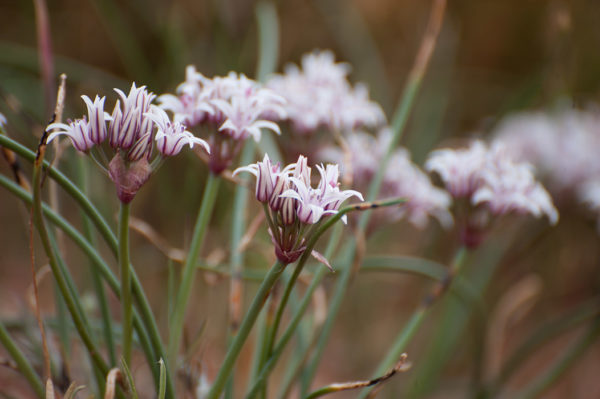
This grass-like plant can be identified by the onion-like scent. It grows small six-petaled flowers with a small white bulb underground. It likes rich soil.
Edible parts: The entire plant is edible.
Flavor: Tastes like a mild onion.
Caution: Wild onions are part of the lily family, which contains toxic varieties. Be sure to smell the plant, because that will tell you if it’s the edible type.
42. Common Milkweed (Asclepias syriaca)
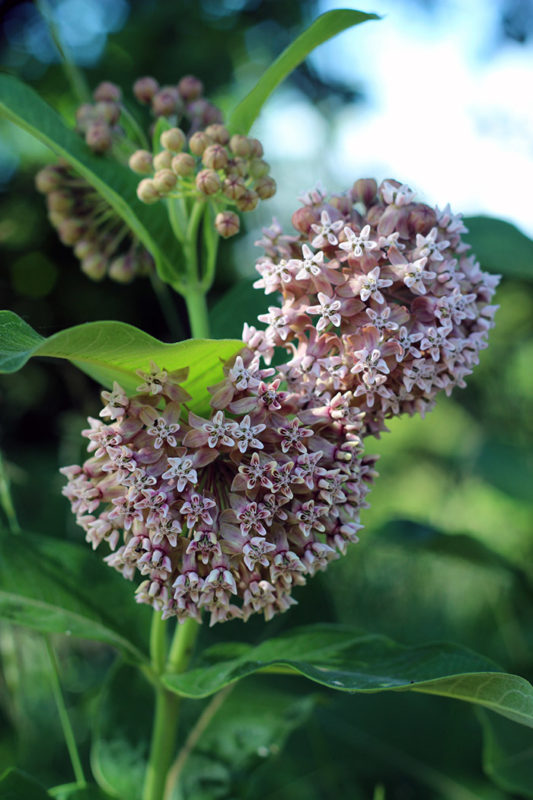
Milkweed is the only source of food for Monarch Butterfly caterpillars, but it also makes a good snack for humans. Because it is bitter and contains toxins, it should be a last resort for nutrition.
Edible parts: Leaves, flower buds, and pods.
Flavor: This plant can be bitter, but boiling helps. It tastes like green beans.
Caution: The sap from this plant can be toxic to humans and animals in large quantities.
43. Blackberries (Rubus spp.)
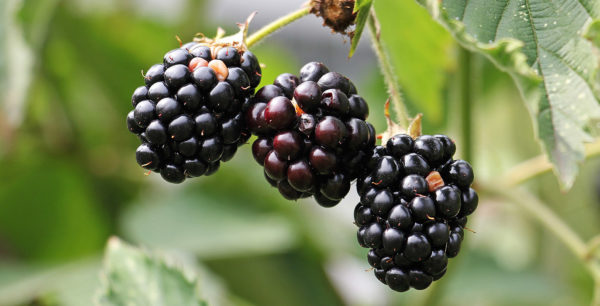
True blackberries grow across the U.S., and they are a delicious treat to eat right off the vine. Himalayan blackberries, which are part of the same family, grow pretty much everywhere on the west coast, whether you want them to or not. They look like trailing blackberry bushes, though the fruit isn’t nearly as sweet as a real blackberry.
Edible parts: Leaves, shoots, and berries.
Flavor: The leaves taste like green tea leaves. Berries depend on the variety, but they can be anywhere from sweet to sour.
Caution: Forage away from roads to avoid pollutants.
44. Gooseberries and Currants (Ribes spp.)
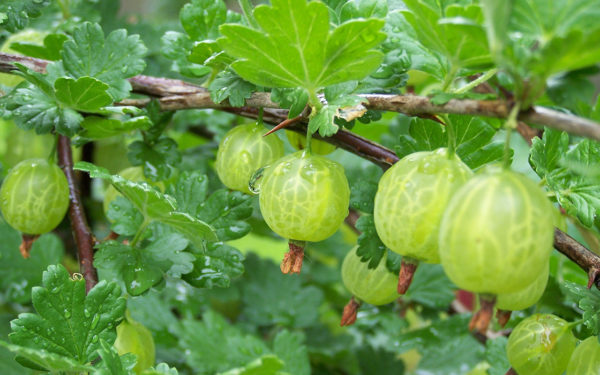
There are over 100 types of gooseberries in North America. In the early fall, these cheerful berries start popping up in cooler climates. The plants are covered in thorns and have maple-like leaves with scalloped edges. The berries can be anywhere from pale gold to dark red.
Edible parts: Berries.
Flavor: Depends on the type, but currants can be mealy or tannic, while gooseberries tend to be tart.
Caution: Some gooseberries are covered in spikes. Boil and mash the spiky kind before forcing it through a strainer.
45. Sheep Sorrel (Rumex acetosella)
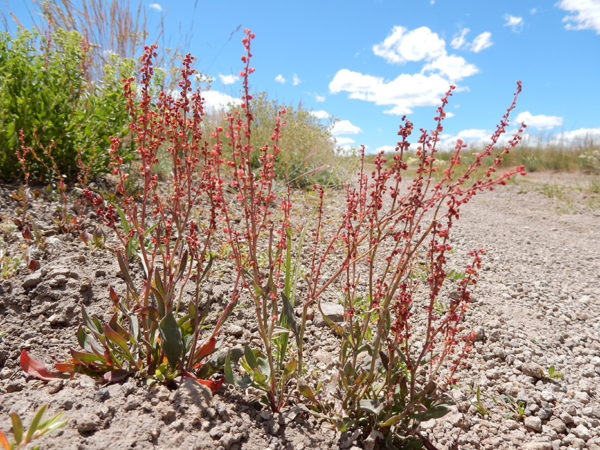
Sheep sorrel is in the buckwheat family. It has arrow-shaped leaves with red stems covered in tiny flowers in the spring.
Edible parts: Leaves and seeds.
Flavor: This has a lemony, tart taste.
Caution: Only eat this edible wild plant raw in small quantities.
46. Miner’s Lettuce (Claytonia perfoliata)
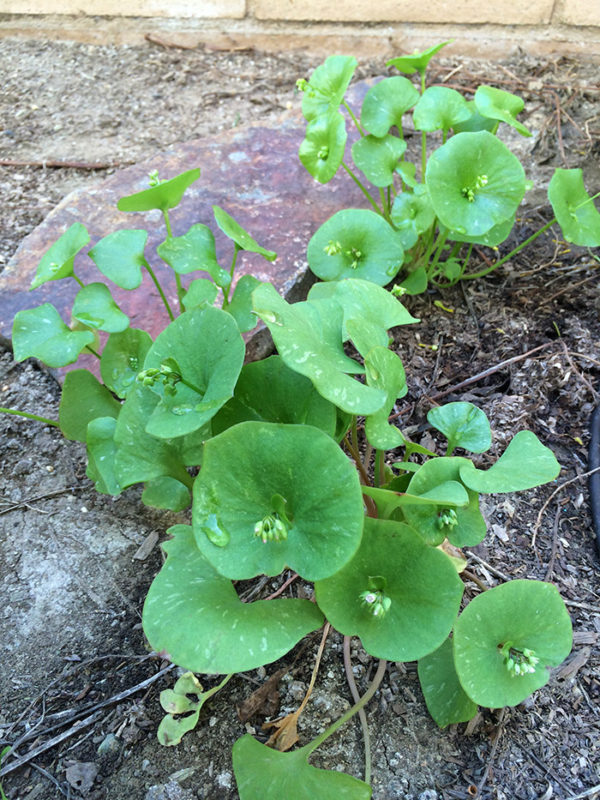
This plant got its name because miners would eat it to stave off scurvy. It’s easy to identify by the disk-like leaf with the stem passing through the middle.
Edible parts: Flower, leaves, and roots.
Flavor: Earthy and sweet.
Caution: If you eat too much of this plant, it can have a laxative effect.
47. Wild Ginger (Asarum caudatum, Asarum canadense)
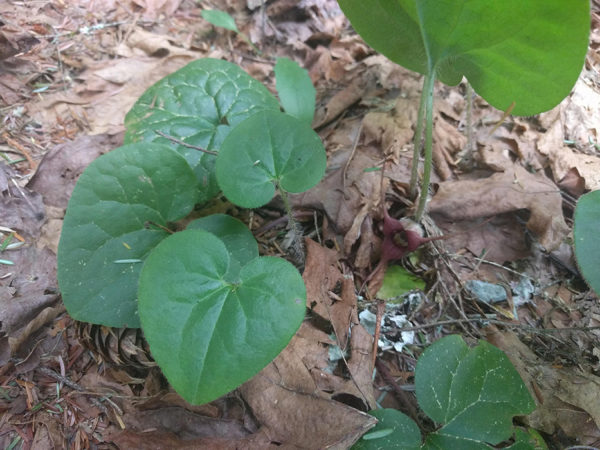
This shade-loving edible wild plant has heart-shaped leaves that grow low to the ground. It looks similar to coltsfoot.
Edible parts: Snack on the rhizomes and leaves.
Flavor: This doesn’t taste like commercial ginger. It has a subtle peppery flavor with just a hint of ginger.
Caution: Don’t overeat this plant because it contains an acid that can be a diuretic.
48. Wild Strawberry (Fragaria virginiana)
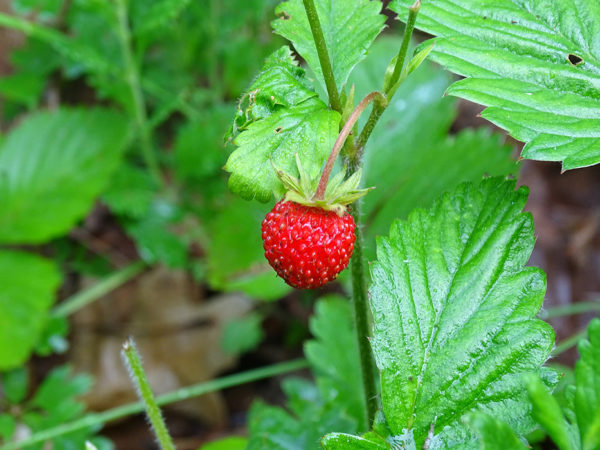
You’ve had cultivated strawberries, but a wild strawberry has a flavor all its own. They look like the ones growing in your garden, but smaller.
Edible parts: The berries.
Flavor: Tastes like an intense strawberry.
Caution: Can be confused with mock or false strawberries.
49. Purslane (Portulaca oleracea)
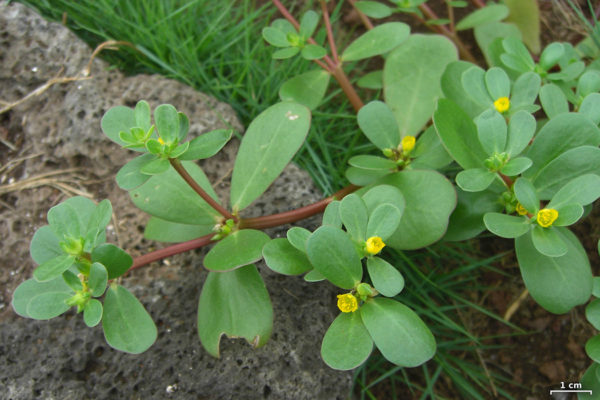
You’ll find this succulent weed growing all over cities and suburbs, where it likes to grow in the cracks of sidewalks and under trees. It’s nutritious, and you can eat it raw or cooked.
Edible parts: Flowers, leaves, and stems.
Flavor: Depending on where they grow, it can be mildly salty or citrus, like a green apple.
Caution: It can look like spurge, which is poisonous (and a terrible weed). If you break it open and there is white liquid, don’t eat it.
50. Acorn (Quercus)

You have probably seen them lying around on the ground in parks and forests, but did you know acorns are edible? The little nut provides a healthy dose of starch, which is usually difficult to forage. You can crush the nuts to make a flour substitute.
Edible parts: You can eat the nut, though you should crush, roast or leach them first.
Flavor: Different oak trees have different amounts of tannins, which impacts the flavor. They can be sweet, nutty, oily, or bitter.
Caution: Look for a hole in the shell, which means the dreaded oak weevil has invaded the nut. Eating these raw can cause constipation.
Note
Identification is essential when attempting to forage for edible wild plants. Eating the wrong thing can spell disaster. Misidentification can lead to unintentional poisonings and, in some cases, death.
Identifying edible wild plants doesn’t just require a strong knowledge of the plants that can be consumed safely. You also need to know which ones are not safe to eat.
The best way to learn? Find someone willing to teach you the art of plant identification. Sometimes visual identification can get confusing if you spot a plant that has a lookalike. Having a guide as a backup is especially useful if you’re a beginner.
Your best bet for safe foraging is to be extremely wary. If ever there’s a doubt in your mind, don’t eat the plant.
Also, keep in mind that volume matters. You can eat a small amount of many edible wild plants, but some can be poisonous in large amounts. Believe it or not, this includes common plants like spinach and swiss chard.
What if Identification is not possible?
If you’re in a life or death situation where 100% certain identification of an edible wild plant is not possible, then you can perform a skin or tongue test. This should only be done if your survival depends on consuming the plant. If your skin reacts in any way to the plant material, DO NOT EAT IT. If your tongue burns or goes numb after eating the plant, DO NOT EAT IT. The bottom line is this: if there is any doubt in your mind DO NOT EAT IT. Better to go hungry than to poison yourself.
When trying to find food to eat in the wild, avoid the following: plants with white oozing sap, seeds or legumes from plants you haven’t been able to identify, plants with spikes or sharp features. Plants with needles or spikes may be cooked in some cases (if properly identified), but they should never be eaten raw.

